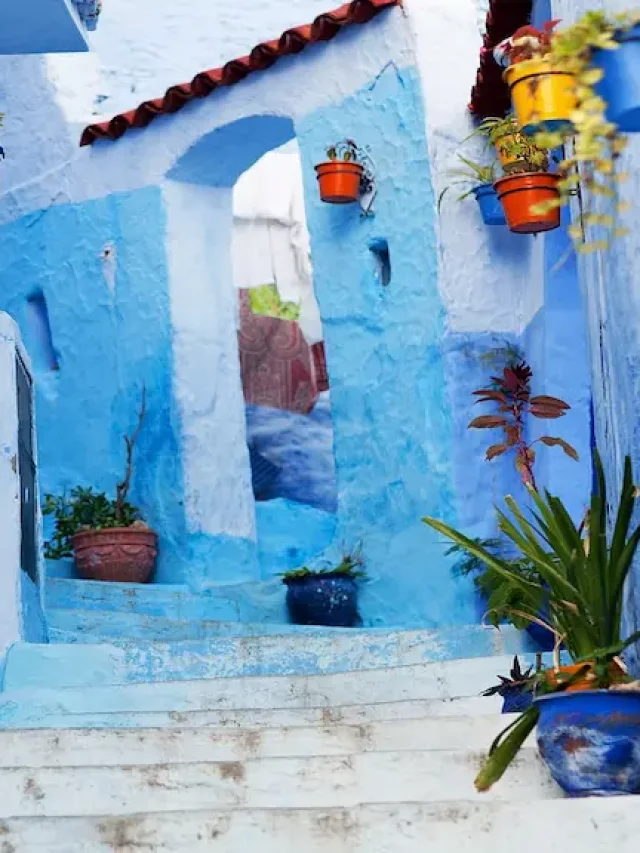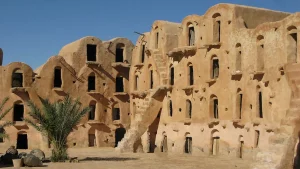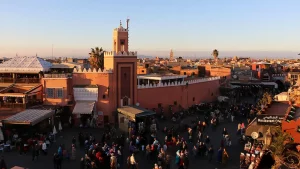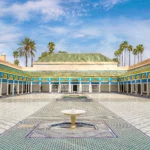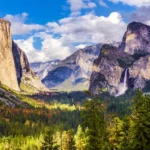Chefchaouen is a beautiful village perched at an altitude of 600 meters in the Rif mountains in northeastern Morocco. Built on a mountainside, it fascinates thousands of travelers from all over the world for the color of its streets and its houses with facades, shutters, and doors tinted blue. A unique and authentic destination that promises an unusual getaway in the mountains of northern Morocco.
Why is Chefchaouen nicknamed the “blue city”?
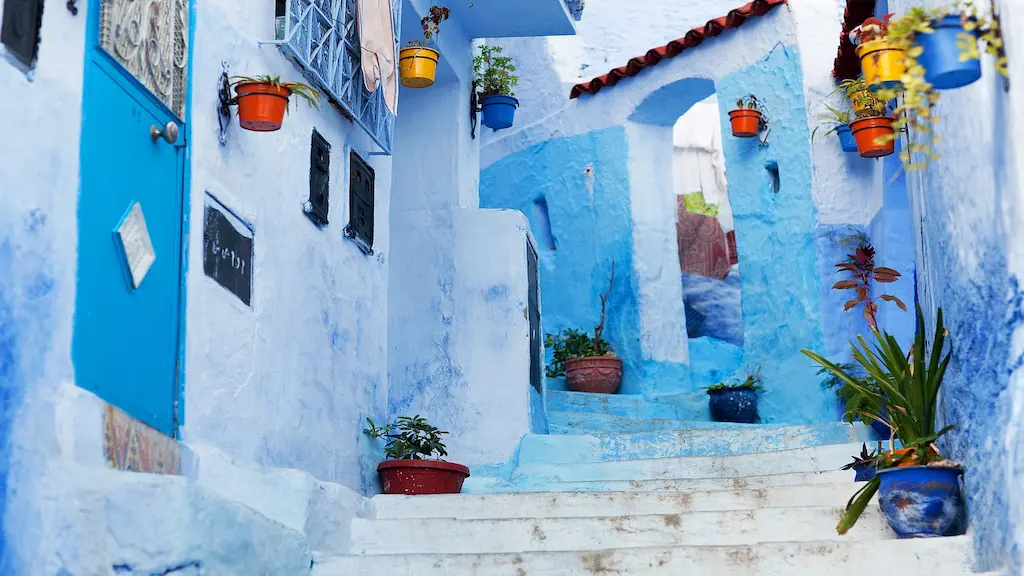
The city of Chefchaouen has an incredible cachet and charm. Surrounded by the green hills of northeastern Morocco, this village built on a mountainside is nicknamed “the blue city” or “the blue pearl” because of the bright blue that covers the facades of the houses and the maze of picturesque streets, which rise and fall.
With its whitewashed houses and decorated with mineral blue, the “blue of smalt”, Chefchaouen is one of the most beautiful villages in Morocco.
But it should be known that Chefchaouen was not always blue. Twenty years ago, it was still a white village like those found in the Rif mountains in Morocco, or southern Spain and the Malaga region. It was the women of the village who had the idea of painting the facades blue to attract visitors to Chefchaouen. Originally, only the old Jewish quarter was painted. Then, as time went by, the color blue spread to the houses and the medina. Today, to keep the shade of blue intact, the women repaint the walls 3 times a year and thus make the village more beautiful and intense each time.
Why blue? Some people say it is the color of freedom in Judaism, of the sky and the sea, a tribute to the water springs of Ras el Maa, or even more surprisingly, blue would keep mosquitoes away.
Places to visit in Chefchaouen
Medina of Chefchaouen
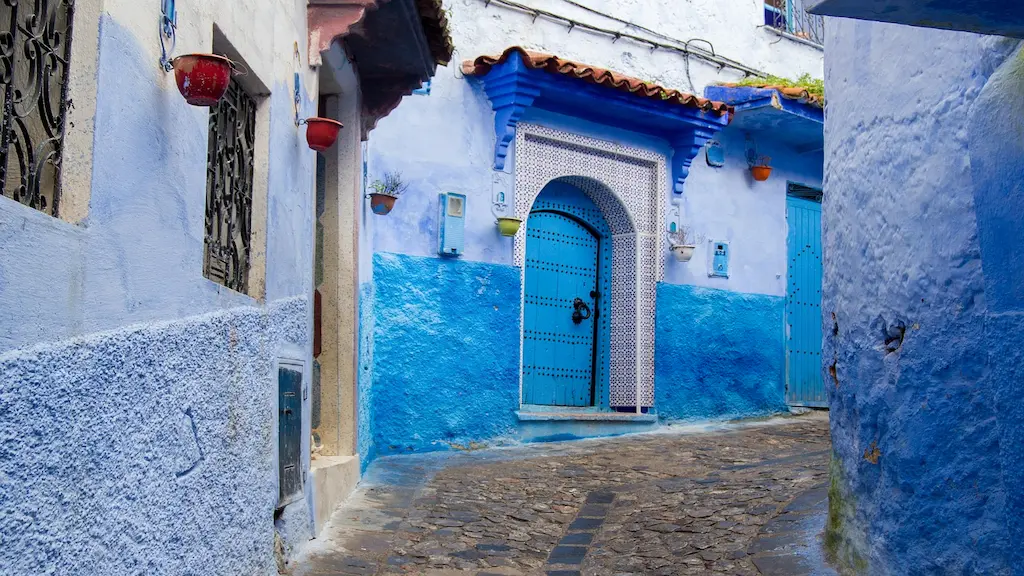
Founded in the 15th century, the old city of Chefchaouen invites you to dive into an azure wave, to get lost in its labyrinth of winding alleys with bluish and authentic colors, adorned with charming details that will delight amateur photographers: narrow staircases, colorful flower boxes hanging on the walls, cats stretching in the sun, children playing ball… The heart of the medina is sublimated by these magnificent oriental doors of a bright blue behind which are hidden stores and riads.
Outa el Hamam Square

The main square of Chefchaouen is very lively during the day and night with its many cafes terraces, allowing to rest while admiring the panoramic view of the mosque and its minaret, with the mountains in the background. It is the ideal place to sip a mint tea, listen to traditional Moroccan musicians, sit in a chicha bar, and observe the bustle of local life.
Kasbah of Chefchaouen
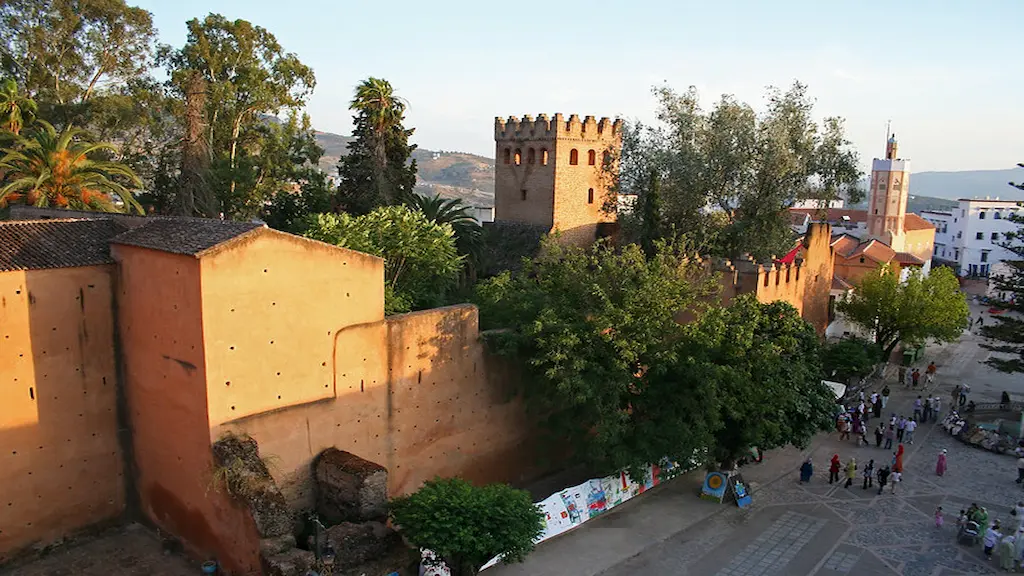
The Kasbah is one of the must-see monuments of Chefchaouen. Built in 1471 by Prince Rachid Ben Ali, this fortress with its reddish walls stands along the Outa El Hamam square and houses the ethnographic museum of Chefchaouen which relates the history, crafts, and culture of the city (pottery, weapons, traditional instruments, costumes…). Inside the Kasbah are a pretty Andalusian garden and its fountain, a real little oasis in the city. Don’t leave without having climbed to the top of the tower of the kasbah to admire the superb panoramic view of Chefchaouen and its surroundings.
The Great Mosque of Chefchaouen
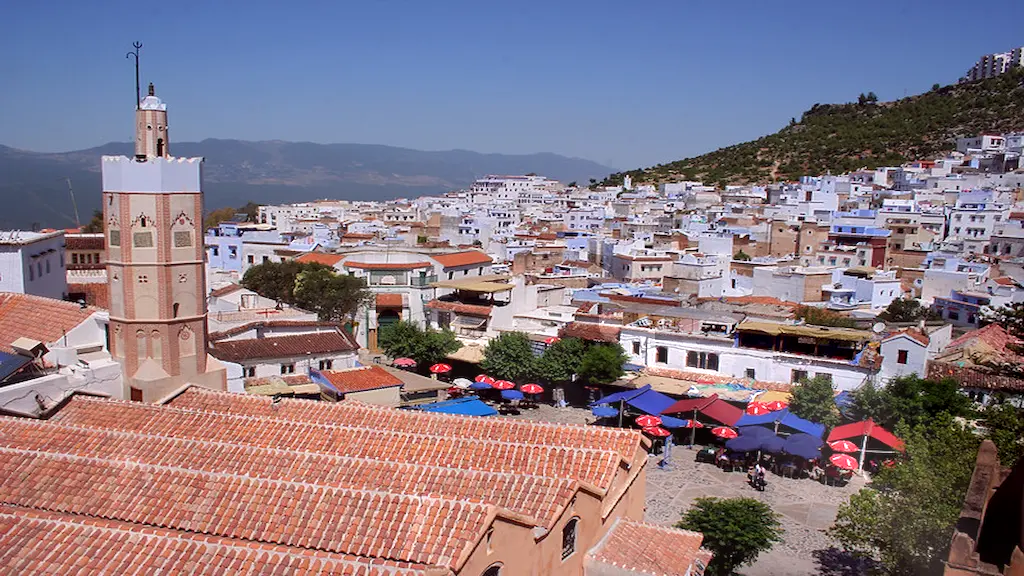
With its octagonal minaret characteristic of the minarets of northern Morocco, the Great Mosque of Chefchaouen is located near the Kasbah, inside the Medina. Only the Muslim faithful can enter the mosque.
Another remarkable mosque outside the city is the Bouzafar Mosque, nicknamed the Spanish Mosque. Perched on the hill, it offers a viewpoint overlooking Chefchaouen and the valley. It is one of the most remarkable views of the blue city at sunset.
The crafts of Chefchaouen
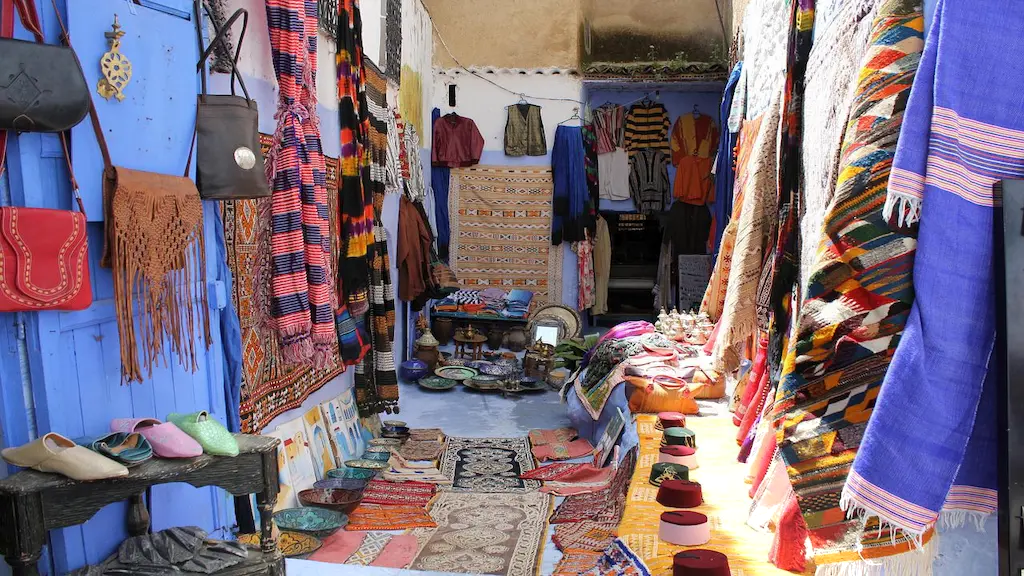
The city of Chefchaouen is famous for its local crafts and weaving workshops. In the many stalls of the medina, you can find fabrics, carpets, lamps, clothes, cushions with colorful tassels, foutas, baskets, and wicker bags… As in the souks, it is a pleasure to go from store to store and to take in the mix of colors typical of the Moroccan style.
Traditional fabrics, embroidery, wool, and leather products from Chefchaouen have a very good reputation. If you come to Chefchaouen, stop by the Botica de la Abuela Aladdin, a store full of flavors and scents where you can find 100% natural soaps, cosmetics, and spices. Travelers in search of a beautiful Berber carpet will be spoiled for choice in the Local Berber Artisanal store, and at very satisfactory prices.
The Beldi souk in Chefchaouen is held twice a week, on Monday and Thursday. Berber merchants arrive from the mountains with their local products and set up shop in the medina, on the Bab souk square.
Trekking around Chefchaouen
After discovering the blue city of Chefchaouen, go on a one or more day trekking adventure in the mountainous and rural province of Rif. This is a paradise for hikers who want to explore another side of Morocco with its steep and wild mountains, rocky paths, small villages, goats and sheep, forests, caves, rivers, and natural bridges.
Waterfalls of Akchour
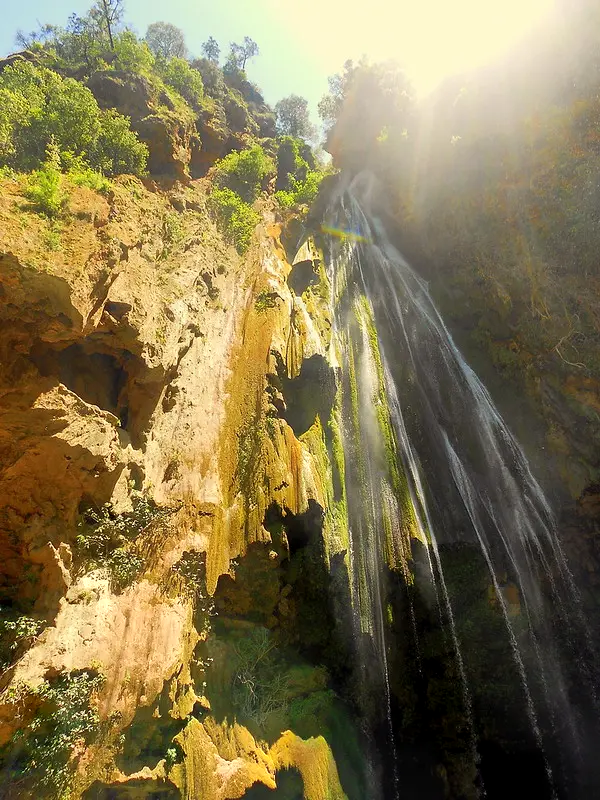
A few kilometers from Chefchaouen are the Akchour Waterfalls, an irresistible place accessible in 2 or 3 hours of walking from the village of Akchour. Let yourself be tempted by this guided hike through the incredible landscapes of the Moroccan desert mountains and their breathtaking views, before enjoying the ultimate reward: a swim in the clear and refreshing waters. Not to be missed on the way is the Pont de Dieu, a superb arch formed in the rock.
Talassemtane National Park
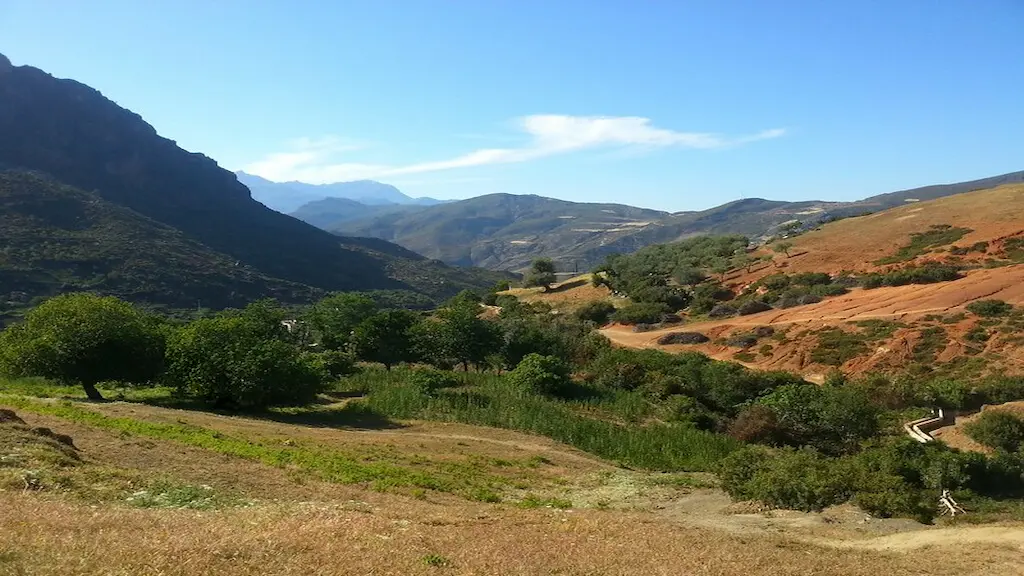
Hiking, 4×4 excursions will take you to the national park of Talassemtane, about twenty kilometers from Chefchaouen. This green mountainous park of 58,000 hectares leaning against the western Rif, offers magnificent walks and hikes through immense forests of fir and cedar trees, spectacular cliffs, and impressive gorges.
Where to eat in Chefchaouen?
It is impossible to ignore Moroccan specialties when spending a day or more in Chefchaouen. The blue city attracts more and more tourists, so there are many restaurants to satisfy the hunger of visitors, noon and evening.
El Houta square is lined with restaurants and typical canteens where you can enjoy couscous, tajines, and other local dishes. The same goes for the unavoidable Outa el Hammam square with its sunny café terraces. Here are some addresses to remember where you can eat very well:
- Restaurant Aladdin: reasonable prices, international or Moroccan dishes (kefta, tajines, couscous), romantic and oriental decoration, terrace with a panoramic view of the blue city.
- Le Morisco: excellent Moroccan dishes, best harira (Moroccan soup) in town, good value for money, squeezed orange juice, authentic setting, on the Outa el Hammam square.
- Le Hamsa: pleasure for the eyes and the taste buds, tasty dishes, terrace with a 360° view of the blue facades of Chefchaouen, a very good address on the Outa el Hammam square.
- Chez Fouad: small restaurant above the Outa el Hammam square, nice and cheap, real Moroccan cooking as at home.
Practical information about Chefchaouen
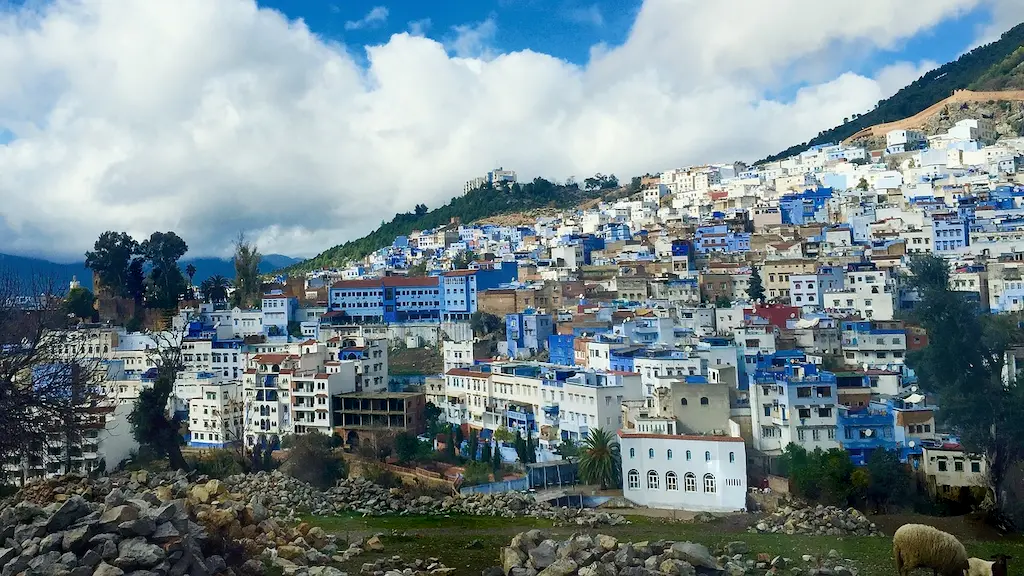
How to get to Chefchaouen?
The city of Chefchaouen is located in northern Morocco, about a 2-hour drive from Tangier (110 km) and 4 hours from Fez (200 km).
There are several ways to reach the blue city of Chefchaouen:
– take the CTM or Supratours buses (4 hours from Fez and 2h45 from Tangier). About 100 dirhams.
– book a full-day excursion from Fez or Tangier and visit the medina with a guide (in private or in a group).
How long to stay in Chefchaouen?
Chefchaouen is a small town in the north of Morocco. The enchantment is immediate, whether you want to cross the city in one day or stay several days to appreciate the whole and its particular atmosphere.
Considering the travel time to get there, we advise you to stay two days to take time to take a lot of pictures and to discover all the corners of this pretty blue medina.
When to visit Chefchaouen?
Chefchaouen is a bit of a victim of its success. To avoid the crowds of tourists eager for pretty photos “Instagrammable”, the best time to discover the city of Chefchaouen is to avoid school vacations and summer.
March, April, June, September, and October are the most favorable months to travel in Morocco (average temperature between 20 and 32°C) and practice hiking around Chefchaouen.
Also Read: 2 Days in the Douro Valley in Portugal

